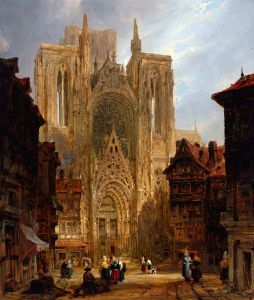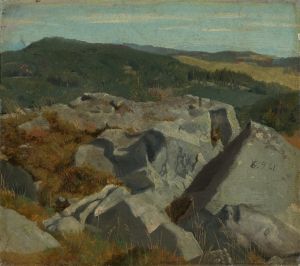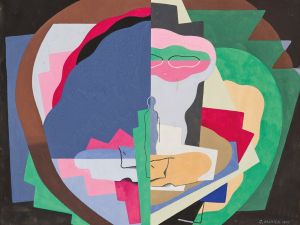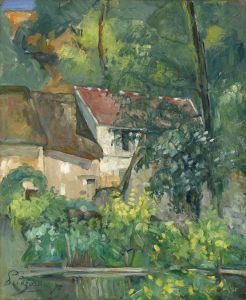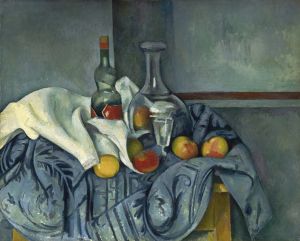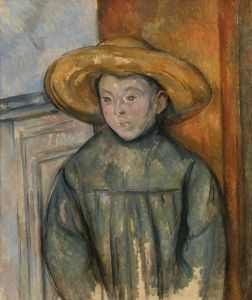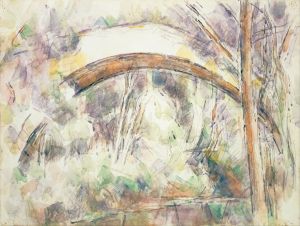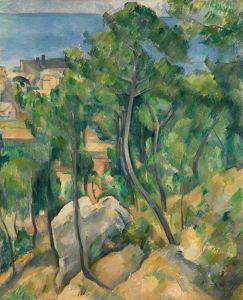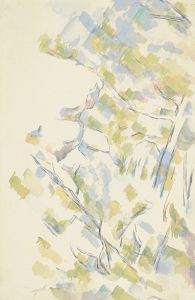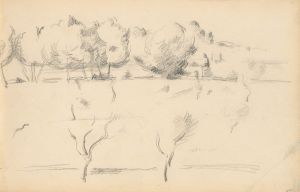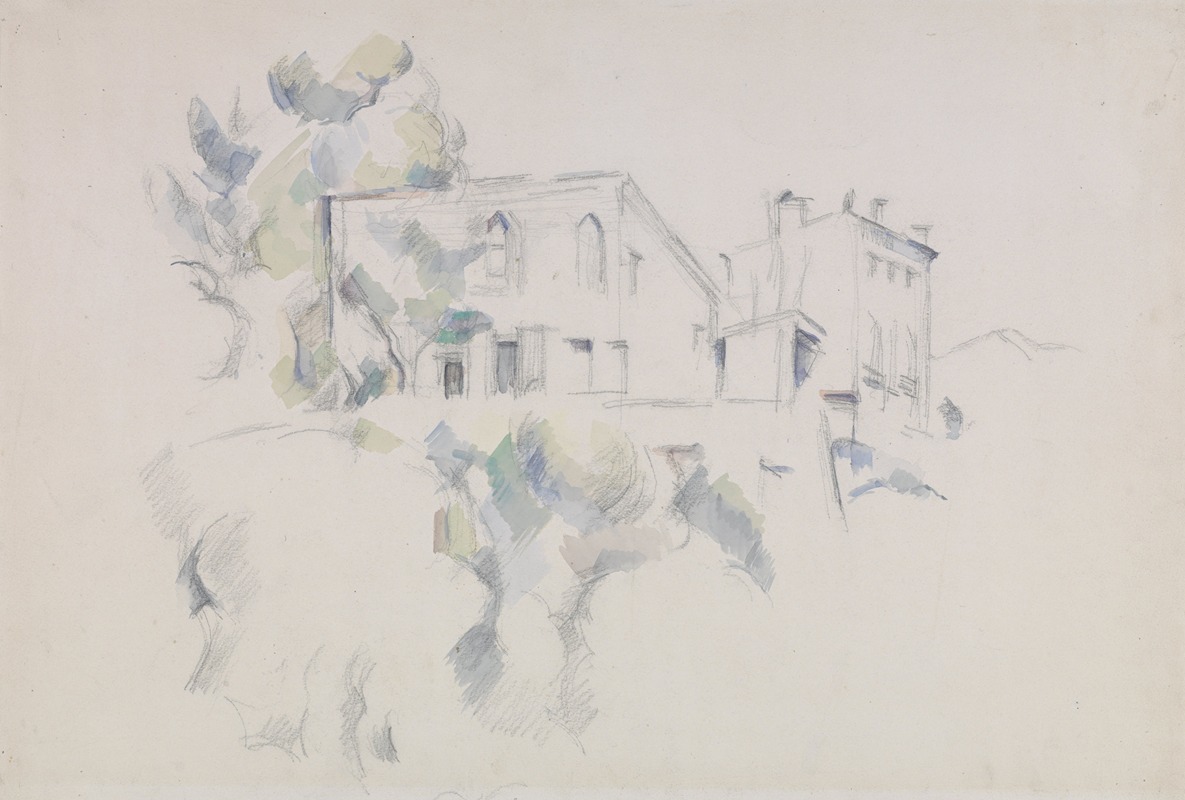
View of the Château Noir
A hand-painted replica of Paul Cézanne’s masterpiece View of the Château Noir, meticulously crafted by professional artists to capture the true essence of the original. Each piece is created with museum-quality canvas and rare mineral pigments, carefully painted by experienced artists with delicate brushstrokes and rich, layered colors to perfectly recreate the texture of the original artwork. Unlike machine-printed reproductions, this hand-painted version brings the painting to life, infused with the artist’s emotions and skill in every stroke. Whether for personal collection or home decoration, it instantly elevates the artistic atmosphere of any space.
View of the Château Noir is a painting by the French Post-Impressionist artist Paul Cézanne. Created between 1900 and 1904, this work is one of several paintings Cézanne produced that depict the Château Noir, a 19th-century mansion located near Aix-en-Provence in southern France. The château and its surrounding landscape served as a recurring subject in Cézanne's later works, reflecting his deep engagement with the natural environment and his interest in exploring the interplay between structure and form.
The painting exemplifies Cézanne's distinctive approach to composition and color. In View of the Château Noir, the artist employs a palette of earthy tones, greens, and blues to capture the rugged terrain and dense vegetation surrounding the château. The building itself is rendered with geometric precision, its angular forms standing in contrast to the organic shapes of the trees and rocks. Cézanne's brushwork is deliberate and layered, creating a sense of depth and solidity while maintaining the flatness of the picture plane. This technique reflects his desire to reconcile the three-dimensionality of the natural world with the two-dimensional surface of the canvas.
Cézanne's fascination with the Château Noir and its surroundings can be linked to his broader artistic goals during this period. He sought to move beyond the fleeting impressions of light and atmosphere that characterized much of Impressionist painting, instead focusing on the underlying structure and permanence of the landscape. By repeatedly studying and painting the same motifs, such as Mont Sainte-Victoire and the Château Noir, Cézanne developed a methodical approach to capturing the essence of his subjects.
The painting is also notable for its compositional balance. Cézanne carefully arranges the elements of the scene, using the vertical lines of the trees and the horizontal planes of the building and ground to create a harmonious yet dynamic composition. This balance reflects his belief in the importance of order and stability in art, even when depicting the untamed beauty of nature.
View of the Château Noir is now housed in the National Gallery of Art in Washington, D.C. It is considered a significant example of Cézanne's mature style and his contributions to the development of modern art. His innovative techniques and vision had a profound influence on later artists, including the Cubists, who admired his ability to break down forms into their geometric components.
This painting remains an enduring testament to Cézanne's mastery of color, form, and composition, as well as his dedication to capturing the timeless qualities of the Provençal landscape.






